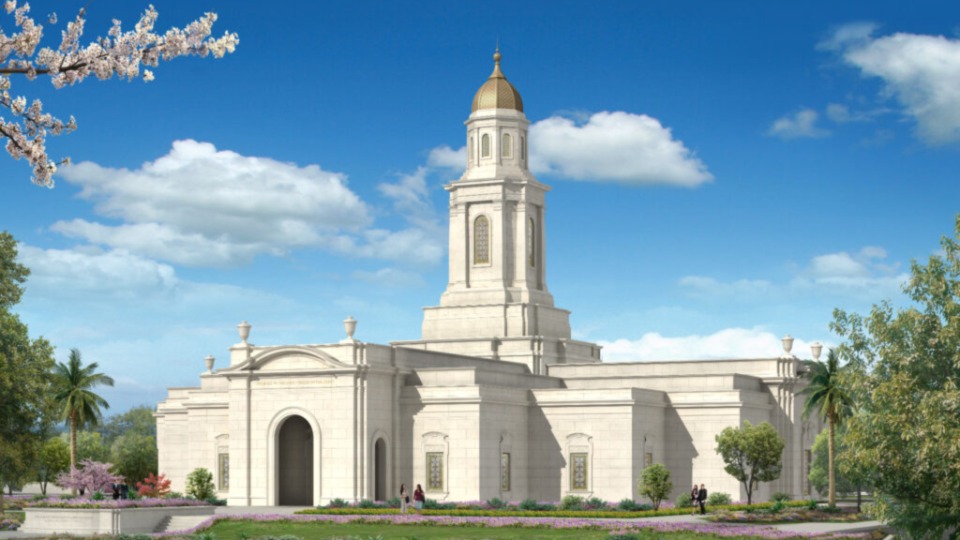Ground has been broken in for the Bacolod Philippines Temple of The Church of Jesus Christ of Latter-day Saints on Saturday morning, December 11, 2021. The sacred structure will be built on a 12.3-acre site located on the Bacolod Airport Access Road.
Presiding over the groundbreaking ceremony was Elder Taniela B. Wakolo of the Seventy and Philippines Area President. He was joined by his counselors Elder Steven R. Bangerter and Elder Yoon Hwan Choi.
- 263042661_271545681693558_2443824757886443283_nhghgh.jpg
- cvcvc.jpg
- DSCF0043.JPG
- DSCF9979.JPG
- DSCF0071.JPG
- DSCF0077_1.JPG
- DSCF0132.JPG
- DSCF0029.JPG
- DSCF9368.JPG
- DSCF9719.JPG
- DSCF9838.JPG
- DSCF9898.JPG
- DSCF9851.JPG
- DSCF9921rtr.JPG
- DSCF9223.JPG
- DSCF9288.JPG
- DSCF9145.JPG
- DSCF9143.JPG
| Temple Square is always beautiful in the springtime. Gardeners work to prepare the ground for General Conference. © 2012 Intellectual Reserve, Inc. All rights reserved. | 1 / 2 |
In a dedicatory prayer, Elder Wakolo emphasized how the temple addresses the Bacolod Saints’ sacrifice to travel far, even by boat, just to receive the sacred ordinances. He stated, “We have patiently waited for the time that a temple will grace this Bacolod area. Thy children here and those who will be served by the Bacolod Temple District, their predecessors and their posterity, have yearned for the ordinances and covenants of the Temple.”
“This temple will then stand not only as a symbol of our membership in the Church, but as a sign of our faith in life after death and as a sacred step toward eternal glory for us and our families,” he added.
Elder Yoon Hwan Choi, in his talk, highlighted President M. Russell Ballard’s quote, “Nothing prevents you or anyone else from visiting the temple grounds. The Lord wants you to prepare yourself to be worthy of a temple recommend and come to the temple as soon as you can.”
“May the Lord continue to accept your dedicated part and help you to prepare to be more ready to receive all the blessings of the temple when it is built. I want you to know that the blessings will be given even before the temple is physically completed,” he emphasized.
Elder Steven R. Bangerter, in his message, recounted the story of Solomon being directed to build a temple by revelation 957 years before the birth of Jesus Christ. “It took seven years to build, but the end result was a beautiful temple dedicated to the Most High God. Though it was later destroyed, it was rebuilt and remained in place. And it was there that as a 12-year-old boy, Jesus was found by his parents listening to the doctors and asking questions.”
“Today, Jesus Christ remains at the center of all that we do. It is by His matchless love, by His perfect life, and His atoning sacrifice that all of this is meaningful,” he added.
Following Elder Wakolo's dedicatory prayer, the area presidency with their spouses led in the turning of the soil. Government leaders, friends of other faiths, and other Church leaders who attended the ceremony were then invited to break ground.
The Bacolod Philippines Temple was announced in October 2019 by Church President Russell M. Nelson. The temple will be single-story of approximately 26,700 square feet with an ancillary building of approximately 18,000 square feet that will include patron housing, an arrival center, and a distribution center.
The Philippines is home to more than 820,000 Latter-day Saints in approximately 1,250 congregations. There are two operating temples in the Philippines and six others announced or under construction. The first temple, in Manila, was dedicated in 1984, and the temple in Cebu City was dedicated in 2010. The other temples are Alabang (under construction), Cagayan de Oro (announced), Davao (under construction), Tacloban City (announced), and Urdaneta (under construction).

Temples of The Church of Jesus Christ of Latter-day Saints differ from meetinghouses or chapels where members meet for Sunday worship services. Each temple is considered a “house of the Lord” where Jesus Christ’s teachings are reaffirmed through sacred ceremonies such as marriages, which unite families forever, and proxy baptisms on behalf of deceased ancestors who did not have the opportunity to be baptized while living.